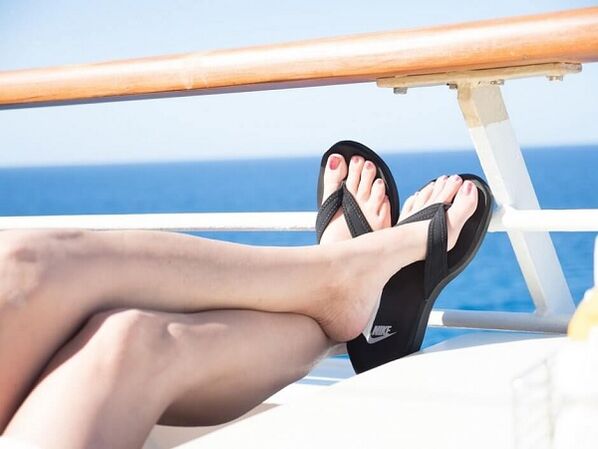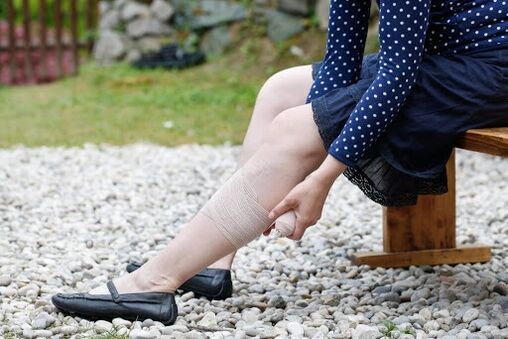Prevention of varicose veins of the legs (lower extremities) makes it possible to avoid the early onset of symptoms of chronic venous insufficiency and to live a full life. Many people want to avoid the development of venous pathology. Nevertheless, few are concerned with the prevention of varicose veins. Modern statistics and observations by experts show that patients who do not have an inheritance factor are also prone to varicose veins. Therefore, prevention of varicose veins in the lower extremities should be started long before the first symptoms of venous insufficiency appear.

Needless to say, when chronic severity, evening edema of the lower extremities, visible varicose veins appear, one should contact a specialist in the treatment of veins, a phlebologist.
What does modern prevention of lower extremity varicose veins mean:
- Physiologically sufficient physical activity. Useful for hiking, swimming, cycling. In these types of loads, the gastrocnemius muscle is involved, which maintains the necessary tone of the venous system of the lower extremities.
- A proper, balanced diet. The required amount of protein, fat, carbohydrates, vitamins and trace elements must enter the body daily.
- Use of compression stockings for excessive and static loads as well as aviation.
- Preventive visit to a phlebologist to monitor the condition of the venous system.
By following these simple rules, you can keep your feet healthy and beautiful for a long time.

Various ointments, creams, and baths with herbal decoctions can cause some pleasure, but they can’t prevent the development of varicose veins. All of these effects do not effectively prevent varicose veins in the legs (lower extremities). Do not think that preventing varicose veins can completely prevent the development of the disease. There is nothing absolute in this world. Nevertheless, preventing varicose veins can give you a long life without the symptoms of the disease.
Patient Questions on Prevention of Varicose Veins in the Lower Limbs
What can’t be done with varicose legs?
With varicose veins in the lower extremities, you cannot:
- Visit the spa and sauna. If varicose veins, thermal exposure can cause thrombophlebitis and deep vein thrombosis.
- Prolonged stay in a static position, long walks, and climbing can cause the development and rapid progression of chronic venous insufficiency.
- It is also better to postpone laser hair removal and massage in the lower limb area until the varicose vein problem is resolved.
What exercises cannot be done with leg varicose veins?
In the case of varicose veins (legs), exercises that involve intense loading of the lower extremities should not be practiced. Even fast hiking and running in good sports shoes that train the calf’s muscles and relieve the veins in the lower limb can have detrimental consequences. Namely: the provocation of an inflammatory reaction and the development of thrombophlebitis. Prolonged static loading (standing or sitting) should be avoided as much as possible. Exercises such as tie-ups, squats with weights are categorically contraindicated for varicose veins. Proper stress on healthy veins is essential, but varicose veins are different. It is much easier to cure varicose veins and exercise than to treat varicose complications for the rest of your life.
Contraindications to lower limb varicose veins?
The following is contraindicated in varicose veins of the lower extremities:
- Intense physical activity on the lower extremities, static load.
- Bath and sauna, tanning.
- Packaging and depilation.
The dubious folk and other therapies are also contraindicated in lower limb varicose veins.
How to prevent varicose veins on the legs if we stand up?
The only really effective way to prevent varicose veins in the lower extremities while working is through good compression therapy. It is advisable to use compression class 2 stockings or knee height. Special exercise of calf muscle on a working day can also be helpful.
Ointment for veins and blood vessels in the legs, which is better? The composition of modern ointments used for varicose veins is different, and accordingly they perform different tasks. Leading phlebologists most often use the following ointments in their practice: preparations containing heparin (lyoton, heparin), anti-inflammatory drugs (diclak, voltaren) or in combination (detragel). You should not overestimate the effects of varicose veins, but look for a good doctor to help you cope with the disease.












































